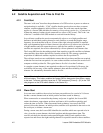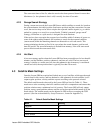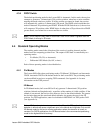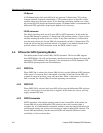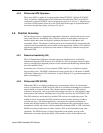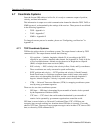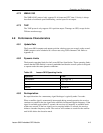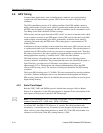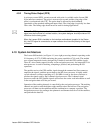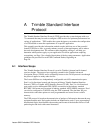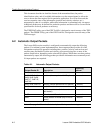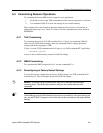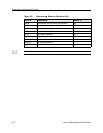
4-10 Lassen-SK8 Embedded GPS Module
Operation and Performance
4.9 GPS Timing
In many timing applications, such as time/frequency standards, site synchronization
systems and event measurement systems, GPS receivers are used to discipline local
oscillators.
The GPS constellation consists of 24 orbiting satellites. Each GPS satellite contains a
highly-stable atomic (Cesium) clock, which is continuously monitored and corrected by
the GPS control segment. Consequently, the GPS constellation can be considered a set of
24 orbiting clocks with worldwide 24-hour coverage.
GPS receivers use the signals from these GPS “clocks” to correct its internal clock, which
is not as stable or accurate as the GPS atomic clocks. GPS receivers like the Lassen-SK8
output a highly accurate timing pulse (PPS) generated by its internal clock, which is
constantly corrected using the GPS clocks. This timing pulse is synchronized to UTC
within ±500 ns.
In addition to serving as a highly accurate stand-alone time source, GPS receivers are used
to synchronize distant clocks in communication or data networks. This synchronization is
possible since all GPS satellite clocks are corrected to a common master clock. Therefore,
the relative clock error is the same, regardless of which satellite or satellites are used. For
timing applications requiring a “common clock”, GPS is the ideal solution.
GPS time accuracy is bounded by the same major source of error affecting position
accuracy, Selective Availability. The position and time errors are related by the speed of
light. Therefore, a position error of 100 meters corresponds to a time error of
approximately 333 ns. The hardware and software implementation affects the GPS
receiver's PPS accuracy level. The receiver's clocking rate determines the PPS steering
resolution.
The Lassen-SK8 clocking rate is 3.126 MHz. This rate corresponds to a steering resolution
of ±160 ns. Software techniques such as over-determined clock algorithm can achieve
PPS accuracy greater than Selective Availability because more satellites are used to give a
higher timing accuracy.
4.9.1 Serial Time Output
Both the TSIP, TAIP, and NMEA protocols include time messages. Refer to Report
Packet 41 in Appendix A or the ZDA descriptions in Appendix D for a description of the
time reports for each protocol and the TAIP TM message.
*
Note – GPS time differs from UTC (Universal Coordinated Time) by a variable, integer
number of seconds UTC = (GPS time) - (GPS / UTC offset).
As of June 1997, the GPS / UTC offset was 11 seconds. The offset has historically
increased by 1 second about every 18 months. System designers should plan to read the
offset value as a part of the timing interface to obtain UTC. The GPS week number is in
reference to a base week (Week #0), starting January 6, 1980.



